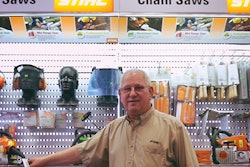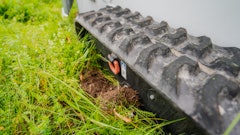
Dealers today understand that wholegoods are an important part of the business. But if you want to be a successful dealership in the future, you have to build your dealership around your service and parts departments.
Your parts department is probably the most profitable part of the entire dealership already. Simple changes can be made to parts inventory and pricing to improve the profitability of the department even further.
A better fill rate
When you ask a manufacturer to fill a parts order, let’s say as an example that 98% of the time you get your parts right away and they aren’t on backorder. That’s a great fill rate. You should know what your fill rate is to your customers out of your own on-hand inventory. Most of the parts departments I work with are in the mid 80s, but you should strive for the low 90s.
If you don’t have a part on hand today, customers will go elsewhere to buy. Keep track of lost sales in your Business Management System (BMS) to find your on-hand inventory fill rate. To increase your fill rate, you need to expand your SKUs. Take your item counts and spread your money farther across the skew line to build a wide and shallow inventory.
The biggest problem you have in your parts department is a service department that needs parts on demand. Create a working relationship with your service department that has service staff planning parts needs early on.
Techs should look at equipment the moment it comes in so they know what parts are needed ahead of time. There are some parts you won’t know you need until you are breaking down the equipment. But with 75% of the repairs in the shop, you can spot your parts needs ahead of time. With an advance notice of 3-5 days on parts needed for the shop, you can reduce on-hand inventory by 20% and reallocate that money to other SKUs.
Improved pricing
Gross profit margins on OEM parts should be around 42-45%. Dealers who sell just outdoor power equipment can get 48-53% on parts. You may not be able to be at that margin with all parts, but should shoot for it as an average.
There are two pricing strategies to consider: Variable and Velocity.
Variable (also known as tier) pricing works like this:
- Items that sell for one penny up to one dollar get marked up 200% over list price.
- Items from $1.01 to $2.50 get marked up to 175% over list price.
- The markup continues to go down as the price goes up.
You can continue to play around and adjust markups until you hit your “ouch point”. The “ouch point” is the price point you hit that makes the customer want to shop around. For the “ouch point” and above, you need to be at MSRP.
To recover margins, build things like freight into the price of a part. Customers don’t want to pay freight, but when it is built into the price they will pay for it without even knowing it. An additional 1% in profit per customer across the board is huge for the dealer, but it means little to the individual customer.
Velocity pricing helps you convince customers that they can buy parts the cheapest from you—even if you aren’t the cheapest. (Walmart uses velocity pricing.) Keep the pricing low on high-volume parts that customers are tuned into the price of. The products that customers aren’t as informed on are where you gain those margins back.
Run a parts-sales-by-volume report (fast-moving parts report) using your BMS to learn what parts you sell most of by vendor line. Go into that group of parts (likely lubricants, filters, etc.) and drop the prices on those 10-15 parts so people think you have good, low parts prices. Then go to the end of the report and bring up the prices on the slowest-moving parts.
Highlight in your marketing that you offer competitively priced parts. Showcase those low-price parts with signage at the register that shows your pricing vs. the manufacturer and your competition.
Your biggest customer: the service department
Your service department is the largest customer of your parts department. The parts department should charge the service department 5% more for parts than they do on over-the-counter sales. That's because it costs a dealer more to sell himself a part than to sell a part to the customer. When a customer comes in for a part, they are furnishing the labor by walking in themselves to get the part. When selling a part to the service department, the parts person has to look up the parts, deliver them to the service department and stage them.
Tweak your margins so that when you sell to your shop, they are paying around 5% more than an over-the-counter customer. If a third of the parts you sell are to your own service department, and you add 5% to all of them, your gross profit margin would move up 1-1.5%. You can make this adjustment in your BMS or by giving your service department a negative discount.
The easiest way to sell more parts is to have the shop do more service. For every dollar of labor you sell, you should be selling almost exactly the same corresponding dollar amount in parts. If you can produce another $100,000 of labor in the shop, automatically your parts should see that growth too.
To grow your service department, sell service with the wholegoods. Pricing packages with a wholegoods purchase should include service and parts. Once a customer has you do their first service, they will be more likely to come back for future service and the parts to go with.





















